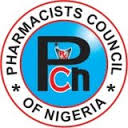New guidance from the World Health Organization will help countries keep essential health services running whilst taking measures to keep people safe in the COVID-19 pandemic. Most health systems are facing challenges of increased demand for care of people with COVID-19, compounded by fear, misinformation and limitations on movement that disrupt the delivery of health care for all conditions. Countries must find ways to keep people safe and ensure the delivery of services such as emergency care for conditions like heart attacks and injury; immunization to prevent outbreaks; treatment for infectious diseases like HIV, malaria and tuberculosis; and screening and treatment for noncommunicable diseases like cancer and diabetes.
Maintaining essential health services: operational guidance for the COVID-19 context recommends practical actions that countries can take at national, sub regional and local levels to reorganize and safely maintain access to high-quality, essential health services. It also outlines sample indicators for monitoring the maintenance of essential health services and describes considerations about when to stop and restart services as COVID-19 transmission waxes and wanes.
The guide outlines a set of basic principles and makes some practical recommendations for countries. These include:
Ensuring timely access to emergency care services 24 hours per day, 7 days per week
Adjusting governance and coordination mechanisms to support timely action
Ensuring infection prevention and control measures to guarantee safe service delivery.
Prioritizing essential services - identifying what can be delayed and what cannot; assessing what can be relocated to areas that are less affected by COVID-19; working out the particular needs of marginalized populations including indigenous peoples, sex workers, migrants and refugees.
Reassigning health workers from areas with low or zero COVID-19 transmission, or from places with excess capacity, to boost the workforce in hard-hit zones so that essential services can be maintained.
Maintaining the availability of essential medications, equipment and supplies by mapping lists of essential services to resource and through weekly reporting from major distribution points, such as hospitals and district stores, on critical products that may be at risk of shortage or other problems.
Removing financial barriers to access and fund public health by suspending payments or user fees at the point of care for essential health services for all patients, regardless of their insurance or citizenship status.
Disseminating information in local languages to prepare the public for changes in service delivery platforms using information sources trusted by the public and ensuring these sources are kept up to date about changes in essential service delivery and about available resources, such as hotlines.
Shifting the delivery of some routine services to digital platforms (telemedicine) and establishing a mechanism for implementing electronic prescriptions (e-prescriptions) among public and private pharmacies and suppliers
The guidance provides specific advice on ways to meet some common health needs. Examples include mechanisms to decrease the volume of people visiting health centres through bulk prescriptions of medications and nutritional supplements and delivering at home for from drop-off points.
Other approaches include monitoring and outreach to people with existing conditions to ensure that they seek care that cannot be safely delayed, such as emergency care for heart attacks, sepsis or complications of pregnancy; auxiliary services, such as basic diagnostic imaging, laboratory and blood bank services.
The guidance outlines specific recommendations on adapting the ways vaccines are administered to reduce the risk of COVID-19 transmission while preventing outbreaks of other deadly diseases.
It also highlights ways to protect people who are particularly vulnerable to the direct and indirect consequences of the pandemic. These include interventions to protect older people from infection and mitigate the effects of social isolation; or alternatives to school-based delivery of services, such as nutritional supplementation, and activities to protect children from violence and keep them healthy at home when schools are closed. It also offers guidance on how mental health services be enhanced and strengthened in the pandemic context.
This new guidance will help decision-makers and managers at the national and subnational levels to ensure the continuity of essential health services in the context of COVID-19.
This is an unprecedented coordinated effort within WHO across four divisions, 14 departments, and dozens of program units at WHO headquarters, all liaising with regional counterparts across the globe.
Source: WHO





